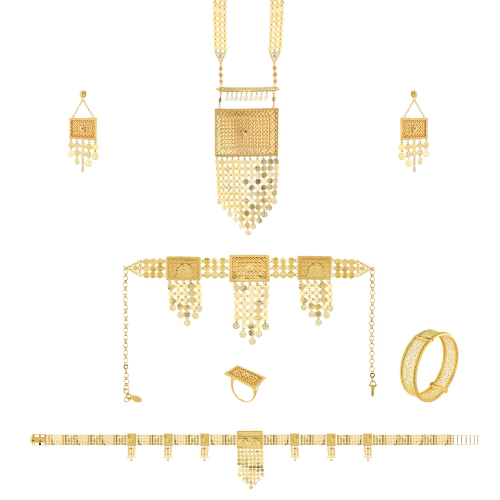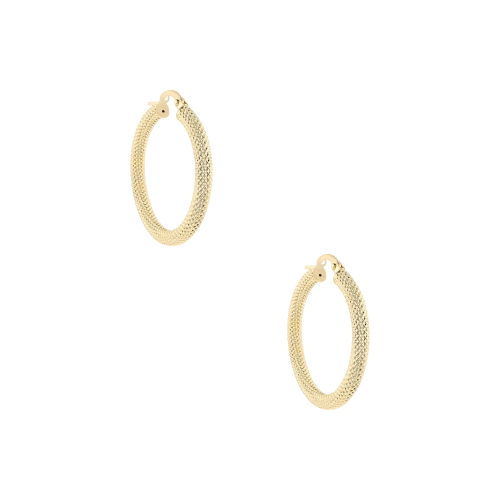Why Vintage Gold Jewelry Is Having More Than Just a Moment

In an era where fast fashion and fleeting trends dominate the style landscape, there's a remarkable shift happening in the jewelry world. Vintage gold jewelry isn't just making a comeback – it's redefining how we think about personal adornment and sustainable luxury. This resurgence represents more than just a cyclical fashion trend; it's a reflection of changing consumer values and a deeper appreciation for craftsmanship that has stood the test of time.
The Rise of Vintage Gold in Contemporary Fashion
Today's fashion-forward individuals are increasingly drawn to vintage gold pieces, from ornate Victorian lockets to bold Art Deco rings. What makes this trend particularly fascinating is its appeal across generations. While millennials and Gen Z are often credited with driving the vintage market, collectors and fashion enthusiasts of all ages are embracing these historical pieces with renewed enthusiasm.
The movement gained significant momentum during the pandemic years, as people sought out meaningful investments and unique pieces that tell a story. Social media platforms, particularly Instagram and Pinterest, have become virtual showcases for vintage jewelry collectors and sellers, making these once-elusive pieces more accessible than ever.
The Appeal of History and Craftsmanship
What sets vintage gold jewelry apart is the unparalleled craftsmanship found in pieces from different eras. Victorian-era jewelry (1837-1901) often features intricate metalwork and symbolic designs, while Art Nouveau pieces (1890-1910) showcase flowing, nature-inspired motifs. The Art Deco period (1920s-1930s) brought geometric patterns and bold compositions that continue to feel remarkably modern.
Modern manufacturing techniques, while efficient, often can't replicate the level of detail and handwork found in these historical pieces. Each vintage item carries the mark of its maker – tiny imperfections and variations that speak to the human touch behind its creation. This authenticity resonates deeply with contemporary consumers who are increasingly skeptical of mass-produced goods.
Sustainability: The Hidden Value of Vintage
The environmental consciousness of modern consumers has played a crucial role in vintage jewelry's resurgence. As awareness of the environmental impact of mining and jewelry production grows, many are turning to existing pieces as a more sustainable choice. Choosing vintage gold jewelry essentially means participating in the ultimate form of recycling – giving new life to pieces that have already been crafted, without demanding new resources from the earth.
Furthermore, vintage gold jewelry often features higher purity levels than modern pieces, making them not just environmentally conscious choices but sound investments as well. Many antique pieces were crafted from 18k or 22k gold, compared to the 14k standard common today.
Investment Value in an Uncertain Economy
In times of economic uncertainty, vintage gold jewelry presents an attractive investment opportunity. Unlike contemporary pieces, which typically depreciate immediately after purchase, vintage jewelry often maintains or increases in value over time. This is particularly true for pieces from renowned makers or those representing significant design periods.
The investment appeal extends beyond the intrinsic value of gold. Rare pieces from specific eras or makers can command premium prices in the collector's market. For instance, signed pieces from houses like Cartier, Van Cleef & Arpels, or Tiffany & Co. from certain periods have seen substantial appreciation in recent years.
Styling Vintage Gold for Modern Wear
One of the most exciting aspects of the vintage gold jewelry trend is how seamlessly these pieces integrate into contemporary wardrobes. Today's fashion influencers and style mavens are mixing periods and styles with abandon, creating unique looks that bridge past and present.
Heavy gold chains from the 1980s are being layered with delicate Victorian pendants. Art Deco cocktail rings are paired with minimal modern designs. This eclectic approach to styling vintage pieces makes them feel fresh and relevant while honoring their historical significance.
Tips for Collecting Vintage Gold Jewelry
For those looking to start their vintage gold jewelry collection, education is key. Understanding hallmarks, learning about different periods, and developing an eye for quality takes time but is essential for making informed purchases. Working with reputable dealers and auction houses can provide valuable guidance and authentication.
Condition is crucial when evaluating vintage pieces. While some wear is expected and can add character, structural integrity should never be compromised. Pay special attention to clasps, settings, and points of stress in the design.
Looking Ahead: The Future of Vintage
The vintage gold jewelry trend shows no signs of slowing down. If anything, it's evolving to encompass an even broader range of styles and periods. The 1990s and early 2000s are now entering the vintage category, bringing bold, statement pieces back into the spotlight.
As digital authentication technologies advance, blockchain and NFTs are beginning to play a role in documenting the provenance of significant pieces, making it easier for collectors to trace the history of their vintage jewelry.
The enduring appeal of vintage gold jewelry lies in its unique combination of beauty, history, sustainability, and investment value. In a world that often seems to move too fast, these pieces offer a tangible connection to the past while feeling thoroughly modern in their appeal. Whether worn as a single statement piece or mixed with contemporary jewelry, vintage gold continues to capture imaginations and hearts, proving that true style never goes out of fashion.
For those considering entering the vintage jewelry market, whether as collectors or casual enthusiasts, the time has never been better. With increasing accessibility through online platforms and a growing appreciation for sustainable luxury, vintage gold jewelry represents not just a fashion choice, but a conscious decision to invest in pieces that carry both historical significance and future value.







